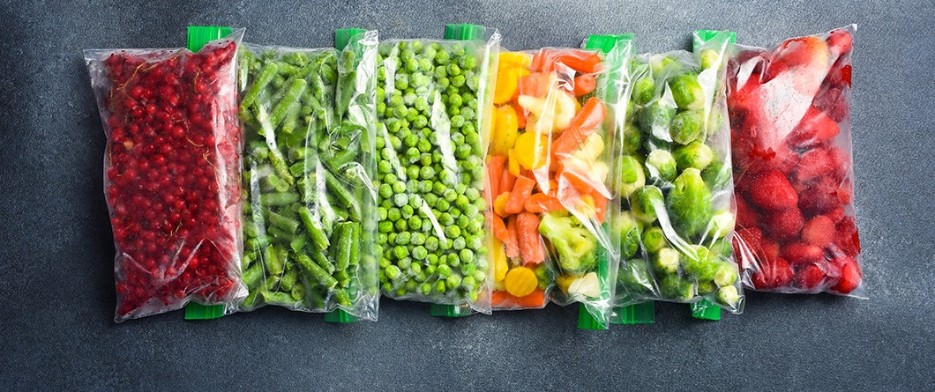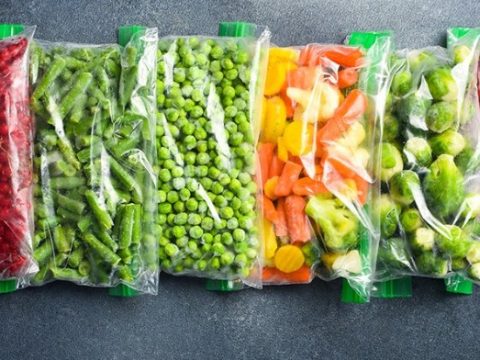Effective Methods for Preserving Food and Reducing Waste
Food waste is a growing issue in modern society, affecting both the environment and household budgets. Each year, countless tons of food are discarded unnecessarily. Adopting efficient food preservation methods is essential for reducing waste and supporting a more sustainable lifestyle.
1. Organizing the Refrigerator and Pantry – A Simple Step to Prevent Waste
Proper organization of your fridge and pantry plays a key role in how food is stored and consumed. When every item has its place and everything is easily accessible, you avoid waste and enjoy a more efficient kitchen workflow.
Useful Recommendations:
- Group by category: Store dairy on one shelf, meat and fish in the coldest area, and fruits and vegetables in dedicated drawers.
- Label containers: Mark each item with the date and contents.
- Follow “first in, first out”: Move soon-to-expire items to the front and consume them first.
- Use transparent containers: Improves visibility and reduces forgotten food.
- Avoid overcrowding: Ensures air circulation and consistent cooling.
Benefits:
- Less food waste through better visibility and planning.
- Time saved during meal prep by knowing what’s available.
- Fresher food with better airflow and storage.
- Money saved by using what you already have.
- Cleaner, more functional kitchen space.
2. Proper Freezing Techniques – Your Ally Against Food Waste
Freezing is one of the most effective ways to extend the shelf life of food. With the right approach, you can freeze meat, vegetables, fruits, baked goods, and even dairy without sacrificing quality.
Tips for Effective Freezing:
- Freeze in small portions to avoid thawing and refreezing.
- Use airtight containers or freezer bags to prevent odor and contamination.
- Set the freezer to -18°C (0°F) for optimal preservation.
- Label everything clearly with the freezing date.
- Regularly check freezer contents and rotate older items.
Benefits:
- Safe, long-term food storage with minimal quality loss.
- Less waste and more flexible meal planning.
- Budget-friendly by using bulk purchases wisely.
- Organized reserves for busy days or unexpected needs.
- Prevention of cross-contamination through proper packaging.
3. Vacuum Sealing – A Smart Method to Extend Freshness
Vacuum sealing eliminates air from the packaging, slowing spoilage and preserving freshness. It’s a practical solution for anyone looking to reduce waste and store food safely for longer periods.
How to Use Vacuum Sealing Effectively:
- Choose a vacuum method suited to your food type and usage needs.
- Seal in individual portions for convenience and accuracy.
- Store in the fridge or freezer based on your needs.
- Label each package with contents and storage date.
Benefits:
- Slows bacterial growth by removing oxygen.
- Preserves original flavor and texture.
- Reduces spoilage and food waste.
- Saves space with compact, air-tight storage.
- Less reliance on disposable bags when reusable containers are used.
4. Traditional Preservation Methods – Authentic Taste with Zero Waste
While modern appliances help, traditional techniques like pickling, jam-making, and canning still offer excellent ways to prevent food waste and capture authentic flavors.
Traditional Practices Include:
- Pickling seasonal vegetables in vinegar or brine and storing them in sterilized jars.
- Making jams or preserves from ripe fruits and storing them in labeled jars.
- Storing cooked or roasted vegetables (like sauces or purees) in sealed containers.
- Keeping jars in cool, dark places like pantries or cellars for optimal shelf life.
Benefits:
- Preserve local, seasonal produce using natural methods.
- Utilize surplus food instead of letting it spoil.
- Save money by preparing seasonal food ahead of time.
- Enjoy food variety year-round without artificial preservatives.
- Maintain nutritional value through low-intervention preservation.
5. Meal Planning and Smart Shopping – A Strategic Approach
Planning meals in advance is one of the most effective ways to reduce food waste. Knowing what’s in your kitchen and what you’ll cook allows you to shop smarter and avoid impulse buying.
Steps to Plan Effectively:
- Create a weekly meal plan that suits your routine and preferences.
- Check what’s already in stock—especially perishable items—and build your meals around them.
- Make a precise shopping list to match the meal plan.
- Shop with intention—prioritize need over offers or packaging.
- Repurpose leftovers creatively—use aging bread in puddings or vegetables in soups.
Benefits:
- Significantly reduced food waste.
- Financial savings from more focused purchases.
- Time saved by avoiding extra shopping trips.
- More balanced and organized cooking routine.
- Greater variety with better use of available ingredients.
6. Labeling – A Simple Yet Powerful Organization Tool
Whether vacuum-sealed or stored in containers, proper labeling ensures foods are consumed before expiring. Recording dates and contents improves clarity and reduces forgotten items.
Benefits of Labeling:
- Better tracking of food inventory.
- Organized storage across fridge, freezer, and pantry.
- Reduced spoilage due to better planning.
- Neater, cleaner storage spaces and improved food safety.
In conclusion, reducing food waste is entirely achievable through consistent and responsible habits. By applying efficient storage methods and careful planning, anyone can minimize waste, save money, and contribute to a healthier planet.


